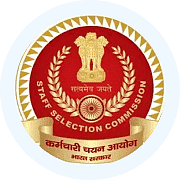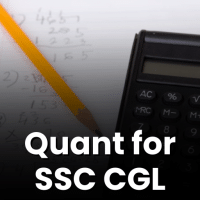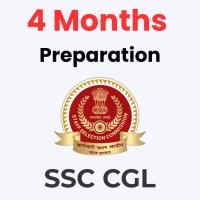SSC CGL Exam > SSC CGL Questions > Direction:In many of the process control appl...
Start Learning for Free
Direction: In many of the process control applications, the purpose of control system is to keep the output (controlled variable) almost constant in spite of changes in load. Mostly in continuous processes the set point remains constant for longer time. Such an operation is called 'Regulator Operation'. The set point generated, and the actual values from sensors are given to a controller. The controller compares both the signals, generates error signal which is utilized to generate a final signal as controller output. The controller output is finally utilized to physically change the values of manipulated variable to achieve stability. The above action is achieved with the help of final control elements. They are operatable either with electrical, pneumatic or with hydraulic signals. The system that serves good for servo operation will generally not be the best for regulator operation. Large capacity or inertia helps to minimize error here, whereas it makes the system sluggish in case of servo operation.
Q. How is the constant value maintained ?
- a)Set point
- b)By error signal
- c)Regulator operation
- d)All of these
Correct answer is option 'D'. Can you explain this answer?
Verified Answer
Direction:In many of the process control applications, the purpose of ...
All the three options are discussed categorically throughout the length of the passage and are not easy to escape themselves from a reader.
Most Upvoted Answer
Direction:In many of the process control applications, the purpose of ...
Understanding Constant Value Maintenance in Control Systems
In process control applications, maintaining a constant output is crucial for stability. This is achieved through several interconnected components and actions.
1. Set Point
- The set point is the desired target value for the controlled variable.
- It serves as a reference for the controller to maintain the output.
2. Error Signal
- The error signal is generated by comparing the set point with the actual value measured by sensors.
- This signal indicates the deviation from the desired output, providing crucial feedback for adjustments.
3. Regulator Operation
- Regulator operation refers to the system's ability to maintain the output constant over time, despite external changes or disturbances.
- It relies on continuous monitoring and adjustment to minimize the error signal.
4. Final Control Elements
- The controller output is sent to final control elements that physically adjust the manipulated variable.
- These elements can be operated using electrical, pneumatic, or hydraulic signals to enact changes in the system.
Conclusion
In conclusion, all components work together to maintain the constant value:
- The set point provides the target.
- The error signal guides adjustments.
- The regulator operation ensures stability over time.
Thus, the correct answer, "All of these," encompasses the holistic approach of maintaining a constant value in control systems through the integration of set points, error signals, and regulator operations.
In process control applications, maintaining a constant output is crucial for stability. This is achieved through several interconnected components and actions.
1. Set Point
- The set point is the desired target value for the controlled variable.
- It serves as a reference for the controller to maintain the output.
2. Error Signal
- The error signal is generated by comparing the set point with the actual value measured by sensors.
- This signal indicates the deviation from the desired output, providing crucial feedback for adjustments.
3. Regulator Operation
- Regulator operation refers to the system's ability to maintain the output constant over time, despite external changes or disturbances.
- It relies on continuous monitoring and adjustment to minimize the error signal.
4. Final Control Elements
- The controller output is sent to final control elements that physically adjust the manipulated variable.
- These elements can be operated using electrical, pneumatic, or hydraulic signals to enact changes in the system.
Conclusion
In conclusion, all components work together to maintain the constant value:
- The set point provides the target.
- The error signal guides adjustments.
- The regulator operation ensures stability over time.
Thus, the correct answer, "All of these," encompasses the holistic approach of maintaining a constant value in control systems through the integration of set points, error signals, and regulator operations.

|
Explore Courses for SSC CGL exam
|

|
Question Description
Direction:In many of the process control applications, the purpose of control system is to keep the output (controlled variable) almost constant in spite of changes in load. Mostly in continuous processes the set point remains constant for longer time. Such an operation is called Regulator Operation. The set point generated, and the actual values from sensors are given to a controller. The controller compares both the signals, generates error signal which is utilized to generate a final signal as controller output. The controller output is finally utilized to physically change the values of manipulated variable to achieve stability. The above action is achieved with the help of final control elements. They are operatable either with electrical, pneumatic or with hydraulic signals. The system that serves good for servo operation will generally not be the best for regulator operation. Large capacity or inertia helps to minimize error here, whereas it makes the system sluggish in case of servo operation.Q. How is the constant value maintained ?a)Set pointb)By error signalc)Regulator operationd)All of theseCorrect answer is option 'D'. Can you explain this answer? for SSC CGL 2025 is part of SSC CGL preparation. The Question and answers have been prepared according to the SSC CGL exam syllabus. Information about Direction:In many of the process control applications, the purpose of control system is to keep the output (controlled variable) almost constant in spite of changes in load. Mostly in continuous processes the set point remains constant for longer time. Such an operation is called Regulator Operation. The set point generated, and the actual values from sensors are given to a controller. The controller compares both the signals, generates error signal which is utilized to generate a final signal as controller output. The controller output is finally utilized to physically change the values of manipulated variable to achieve stability. The above action is achieved with the help of final control elements. They are operatable either with electrical, pneumatic or with hydraulic signals. The system that serves good for servo operation will generally not be the best for regulator operation. Large capacity or inertia helps to minimize error here, whereas it makes the system sluggish in case of servo operation.Q. How is the constant value maintained ?a)Set pointb)By error signalc)Regulator operationd)All of theseCorrect answer is option 'D'. Can you explain this answer? covers all topics & solutions for SSC CGL 2025 Exam. Find important definitions, questions, meanings, examples, exercises and tests below for Direction:In many of the process control applications, the purpose of control system is to keep the output (controlled variable) almost constant in spite of changes in load. Mostly in continuous processes the set point remains constant for longer time. Such an operation is called Regulator Operation. The set point generated, and the actual values from sensors are given to a controller. The controller compares both the signals, generates error signal which is utilized to generate a final signal as controller output. The controller output is finally utilized to physically change the values of manipulated variable to achieve stability. The above action is achieved with the help of final control elements. They are operatable either with electrical, pneumatic or with hydraulic signals. The system that serves good for servo operation will generally not be the best for regulator operation. Large capacity or inertia helps to minimize error here, whereas it makes the system sluggish in case of servo operation.Q. How is the constant value maintained ?a)Set pointb)By error signalc)Regulator operationd)All of theseCorrect answer is option 'D'. Can you explain this answer?.
Direction:In many of the process control applications, the purpose of control system is to keep the output (controlled variable) almost constant in spite of changes in load. Mostly in continuous processes the set point remains constant for longer time. Such an operation is called Regulator Operation. The set point generated, and the actual values from sensors are given to a controller. The controller compares both the signals, generates error signal which is utilized to generate a final signal as controller output. The controller output is finally utilized to physically change the values of manipulated variable to achieve stability. The above action is achieved with the help of final control elements. They are operatable either with electrical, pneumatic or with hydraulic signals. The system that serves good for servo operation will generally not be the best for regulator operation. Large capacity or inertia helps to minimize error here, whereas it makes the system sluggish in case of servo operation.Q. How is the constant value maintained ?a)Set pointb)By error signalc)Regulator operationd)All of theseCorrect answer is option 'D'. Can you explain this answer? for SSC CGL 2025 is part of SSC CGL preparation. The Question and answers have been prepared according to the SSC CGL exam syllabus. Information about Direction:In many of the process control applications, the purpose of control system is to keep the output (controlled variable) almost constant in spite of changes in load. Mostly in continuous processes the set point remains constant for longer time. Such an operation is called Regulator Operation. The set point generated, and the actual values from sensors are given to a controller. The controller compares both the signals, generates error signal which is utilized to generate a final signal as controller output. The controller output is finally utilized to physically change the values of manipulated variable to achieve stability. The above action is achieved with the help of final control elements. They are operatable either with electrical, pneumatic or with hydraulic signals. The system that serves good for servo operation will generally not be the best for regulator operation. Large capacity or inertia helps to minimize error here, whereas it makes the system sluggish in case of servo operation.Q. How is the constant value maintained ?a)Set pointb)By error signalc)Regulator operationd)All of theseCorrect answer is option 'D'. Can you explain this answer? covers all topics & solutions for SSC CGL 2025 Exam. Find important definitions, questions, meanings, examples, exercises and tests below for Direction:In many of the process control applications, the purpose of control system is to keep the output (controlled variable) almost constant in spite of changes in load. Mostly in continuous processes the set point remains constant for longer time. Such an operation is called Regulator Operation. The set point generated, and the actual values from sensors are given to a controller. The controller compares both the signals, generates error signal which is utilized to generate a final signal as controller output. The controller output is finally utilized to physically change the values of manipulated variable to achieve stability. The above action is achieved with the help of final control elements. They are operatable either with electrical, pneumatic or with hydraulic signals. The system that serves good for servo operation will generally not be the best for regulator operation. Large capacity or inertia helps to minimize error here, whereas it makes the system sluggish in case of servo operation.Q. How is the constant value maintained ?a)Set pointb)By error signalc)Regulator operationd)All of theseCorrect answer is option 'D'. Can you explain this answer?.
Solutions for Direction:In many of the process control applications, the purpose of control system is to keep the output (controlled variable) almost constant in spite of changes in load. Mostly in continuous processes the set point remains constant for longer time. Such an operation is called Regulator Operation. The set point generated, and the actual values from sensors are given to a controller. The controller compares both the signals, generates error signal which is utilized to generate a final signal as controller output. The controller output is finally utilized to physically change the values of manipulated variable to achieve stability. The above action is achieved with the help of final control elements. They are operatable either with electrical, pneumatic or with hydraulic signals. The system that serves good for servo operation will generally not be the best for regulator operation. Large capacity or inertia helps to minimize error here, whereas it makes the system sluggish in case of servo operation.Q. How is the constant value maintained ?a)Set pointb)By error signalc)Regulator operationd)All of theseCorrect answer is option 'D'. Can you explain this answer? in English & in Hindi are available as part of our courses for SSC CGL.
Download more important topics, notes, lectures and mock test series for SSC CGL Exam by signing up for free.
Here you can find the meaning of Direction:In many of the process control applications, the purpose of control system is to keep the output (controlled variable) almost constant in spite of changes in load. Mostly in continuous processes the set point remains constant for longer time. Such an operation is called Regulator Operation. The set point generated, and the actual values from sensors are given to a controller. The controller compares both the signals, generates error signal which is utilized to generate a final signal as controller output. The controller output is finally utilized to physically change the values of manipulated variable to achieve stability. The above action is achieved with the help of final control elements. They are operatable either with electrical, pneumatic or with hydraulic signals. The system that serves good for servo operation will generally not be the best for regulator operation. Large capacity or inertia helps to minimize error here, whereas it makes the system sluggish in case of servo operation.Q. How is the constant value maintained ?a)Set pointb)By error signalc)Regulator operationd)All of theseCorrect answer is option 'D'. Can you explain this answer? defined & explained in the simplest way possible. Besides giving the explanation of
Direction:In many of the process control applications, the purpose of control system is to keep the output (controlled variable) almost constant in spite of changes in load. Mostly in continuous processes the set point remains constant for longer time. Such an operation is called Regulator Operation. The set point generated, and the actual values from sensors are given to a controller. The controller compares both the signals, generates error signal which is utilized to generate a final signal as controller output. The controller output is finally utilized to physically change the values of manipulated variable to achieve stability. The above action is achieved with the help of final control elements. They are operatable either with electrical, pneumatic or with hydraulic signals. The system that serves good for servo operation will generally not be the best for regulator operation. Large capacity or inertia helps to minimize error here, whereas it makes the system sluggish in case of servo operation.Q. How is the constant value maintained ?a)Set pointb)By error signalc)Regulator operationd)All of theseCorrect answer is option 'D'. Can you explain this answer?, a detailed solution for Direction:In many of the process control applications, the purpose of control system is to keep the output (controlled variable) almost constant in spite of changes in load. Mostly in continuous processes the set point remains constant for longer time. Such an operation is called Regulator Operation. The set point generated, and the actual values from sensors are given to a controller. The controller compares both the signals, generates error signal which is utilized to generate a final signal as controller output. The controller output is finally utilized to physically change the values of manipulated variable to achieve stability. The above action is achieved with the help of final control elements. They are operatable either with electrical, pneumatic or with hydraulic signals. The system that serves good for servo operation will generally not be the best for regulator operation. Large capacity or inertia helps to minimize error here, whereas it makes the system sluggish in case of servo operation.Q. How is the constant value maintained ?a)Set pointb)By error signalc)Regulator operationd)All of theseCorrect answer is option 'D'. Can you explain this answer? has been provided alongside types of Direction:In many of the process control applications, the purpose of control system is to keep the output (controlled variable) almost constant in spite of changes in load. Mostly in continuous processes the set point remains constant for longer time. Such an operation is called Regulator Operation. The set point generated, and the actual values from sensors are given to a controller. The controller compares both the signals, generates error signal which is utilized to generate a final signal as controller output. The controller output is finally utilized to physically change the values of manipulated variable to achieve stability. The above action is achieved with the help of final control elements. They are operatable either with electrical, pneumatic or with hydraulic signals. The system that serves good for servo operation will generally not be the best for regulator operation. Large capacity or inertia helps to minimize error here, whereas it makes the system sluggish in case of servo operation.Q. How is the constant value maintained ?a)Set pointb)By error signalc)Regulator operationd)All of theseCorrect answer is option 'D'. Can you explain this answer? theory, EduRev gives you an
ample number of questions to practice Direction:In many of the process control applications, the purpose of control system is to keep the output (controlled variable) almost constant in spite of changes in load. Mostly in continuous processes the set point remains constant for longer time. Such an operation is called Regulator Operation. The set point generated, and the actual values from sensors are given to a controller. The controller compares both the signals, generates error signal which is utilized to generate a final signal as controller output. The controller output is finally utilized to physically change the values of manipulated variable to achieve stability. The above action is achieved with the help of final control elements. They are operatable either with electrical, pneumatic or with hydraulic signals. The system that serves good for servo operation will generally not be the best for regulator operation. Large capacity or inertia helps to minimize error here, whereas it makes the system sluggish in case of servo operation.Q. How is the constant value maintained ?a)Set pointb)By error signalc)Regulator operationd)All of theseCorrect answer is option 'D'. Can you explain this answer? tests, examples and also practice SSC CGL tests.

|
Explore Courses for SSC CGL exam
|

|
Signup to solve all Doubts
Signup to see your scores go up within 7 days! Learn & Practice with 1000+ FREE Notes, Videos & Tests.
























